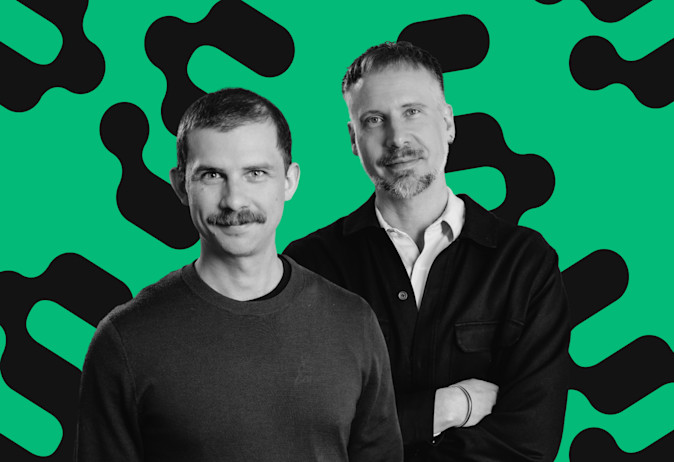Headless e-commerce leaves you with infinite benefits and strengths
Living up to customer expectations and trends in the market and businesses requires a need and ability to apply the change. Fast. The customers' behavior, and demands, an e-commerce today are expected to live up to are different from what they were five years ago. Our buying patterns change each day rapidly, and not updating your e-commerce accordingly would be to ignore the development of our time. This is where headless e-commerce comes in. This flexible invention enables businesses to extend their brands quickly to meet new needs.
In recent years headless e-commerce platforms have begun to challenge traditional monoliths (all-in-one solutions) and are more and more becoming the household choice for retailers and brands with vision and ambition.
But what is headless e-commerce?
To sum it up in a sentence: The front-end is decoupled from the back-end, meaning that the presentation layer (often a website) isn’t boxed in together with the back-end (business logic). This kind of setup paves the way for a lot of opportunities, mostly because you can pick and choose your own commerce stack and find the solution that fits your business and organization. And since the front-end is decoupled from the back-end you won’t ever be limited when it comes to design, customer experience, and testing out new sales channels.

The difference between headless and monolith in plain English
Think of an e-commerce website as a building. A monolithic platform would be like a building where all the rooms (such as the living room, kitchen, and bedrooms) are connected and built into one structure. This means that if you want to make changes to one part of the building, you have to go through the entire building to make those changes.
A headless platform, on the other hand, is like a building where each room (such as the living room, kitchen, and bedrooms) is its own separate structure, connected by a common entrance. In a headless platform, the front-end (the part of the website that customers interact with, like the living room) is separated from the back-end (the part that runs the website's functionality, like the kitchen and bedrooms).
This separation allows for more flexibility and faster innovation, as changes to the front-end or back-end can be made without affecting the other. For example, you can change the design of your living room without having to go through the kitchen or bedrooms.
In summary, a monolithic platform is a tightly connected, all-in-one system, while a headless platform separates the front-end and back-end for more flexibility and innovation.
Why are e-tailers and brands switching to headless
There are a lot of reasons, but one of them is certain that you hardly can find a platform that can do it all. Most of the monoliths out there, where both the presentation layer and business logic are tied together, come with pre-built templates connected to back-end functionality - and we all know that when your business evolves, there will be new things to add and new things to try out and that’s when a monolith always comes up short. They aren’t flexible enough.
And why’s that you might think? - Well, evolution.
Implementing a headless storefront
In a headless e-commerce setup, the front-end and back-end are connected by an API, which acts like a bridge between the two. The front-end can request information from the back-end through the API, and the back-end can send information to the front-end through the API.
Here's a simple example to help illustrate this: Imagine you're building a lemonade stand website. The front-end of your website might show pictures of your lemonade and the flavors you offer, while the back-end might be responsible for keeping track of your inventory and processing orders. When a customer wants to buy some lemonade, they select their flavor on the front-end and click "Order." This sends a request through the API to the back-end, which then processes the order and updates the inventory.
This separation of the front-end and back-end allows for more flexibility and faster innovation, as changes can be made to either the front-end or back-end without affecting the other. Additionally, it allows for easier scaling, as the front-end and back-end can be managed and updated separately.
What can you expect when switching to headless e-commerce?
Pretty much anything, basically. We touched on some of the things earlier in the article, and here’s a more detailed list of pros.
Full-out brand identity: When there are no limitations, there’s room for vision and creativity. You can build the best possible brand/customer experience without having to think about what’s possible and what’s not. Your brand identity can shine through the way you want it to.
Enhanced flexibility: With a headless commerce architecture, the front-end can be easily changed or updated without affecting the back end, which means that businesses can quickly adapt to changing customer needs or preferences.
Cost-effectiveness: Back when it was all about monoliths, every change that needed to be done was more or less a big project. And big projects often tend to ruin your budget, which in the long run will affect other things that drives revenue. With a headless approach, these types of projects aren’t seen as an issue.
Scalability: Because the front-end and back-end are separate, businesses can easily scale up or down their online store without having to worry about the impact on the other side. This can help to ensure that the online store can handle large amounts of traffic and data without slowing down or crashing.
Improved performance: Since the front-end and back-end are decoupled, businesses can use the most appropriate technology for each side. This can help to improve the overall performance of the online store a lot.
Every positive thing comes often together with a negative dito, and that’s the case even here. When thinking about upgrading your online store and comparing headless platform providers, remember this:
Challenges with headless e-commerce
Higher complexity: Because the front-end and back-end are decoupled, businesses will need to manage and maintain two separate systems, which can be more complex than a traditional e-commerce architecture.
Limited functionality: In some cases, the front-end may not be able to access all of the functionality or data available on the back-end. This can limit both the organization, sales and overall business.
Integration issues: Headless e-commerce architectures may require additional integration work to ensure that the front-end and back-end can communicate and exchange data effectively. This can be a complex and time-consuming process, which may require specialized skills and expertise.
Higher costs: Implementing a headless e-commerce architecture may require additional investments in technology, resources, and expertise, which can increase the overall cost of the online store. This may not be feasible for all businesses, particularly smaller companies with limited budgets.
Overall, while headless e-commerce can offer many benefits, it may not be the right solution for every business. It's important for businesses to carefully evaluate their needs and goals before deciding whether to adopt a headless e-commerce architecture.
Will a headless setup guarantee more sales?
Unfortunately no. Imagine you buy a formula 1 car, does it mean that you’re automatically a great formula 1 driver? Nope. But it will guarantee you speed and power. So, it all comes down to how you use your tools and shape your skills to suit your driving further on. However, headless leaves you with endless opportunities.
Case examples of retailers and brands switching to headless
ATV-Huset
ATV-Huset needed to rebuild their digital strategy and merge three brands into the same backend. The solution we’re a headless setup with multiple storefronts.

KA YO
KA YO’s vision involves taking omni-channel and brand experience to the next level. Therefore they needed the freedom you get when separating the front-end from the back-end.

Motostar
The team at Motostar were stuck with a commerce platform that couldn’t keep up with their business needs. After thoroughly researching the market, Motostar found a suitable option in Geins Commerce. A platform built upon MACH technology.

Composable commerce - a step further than headless e-commerce
Lately there’s been buzzing around a new thing called Composable Commerce. ‘Composable’ can be described as a step further and more complex than headless e-commerce.
The main difference between composable and headless is that you pick and choose from available services to build your perfected commerce suite. Compared to a headless setup, when only the presentation layer (storefront) is separated from the back-end.
Learn more about Composable Commerce
Fler inlägg
The Digital Product Passport: Your Next Headache—or Your Biggest Opportunity
In this article, Carl shares his thoughts on the upcoming Digital Product Passport (DPP) and its far-reaching impact on e-commerce. While it may seem like just another compliance hurdle, the DPP is a step toward greater transparency, sustainability, and progress. It’s not just about meeting regulations—it’s about reshaping the way we think about products and their stories. Change is coming, and it’s for the better.
Composable commerce - Here’s the thing
Ecommerce is growing and so is the competition between brands and retailers. The point of composable is the ease of movement and instead of replacing your entire platform, replace parts when needed. Predictions go around saying that organizations adopting the composable approach will be able to implement new features 80% faster than their competitors building their platforms from scratch. No wonder there’s hype out there.
Aligning marketing and tech: why short-term wins can sabotage long-term success
The tension between short-term wins and long-term success is evident in both marketing strategies and tech investments. Performance marketing often prioritizes immediate results, while brand marketing focuses on sustainable growth. Similarly, choosing tech stacks for quick wins can hinder long-term scalability and flexibility. In this article, Carl Abrahamsson, COO of Geins, explores these parallels and offers insights on achieving a balanced approach.




